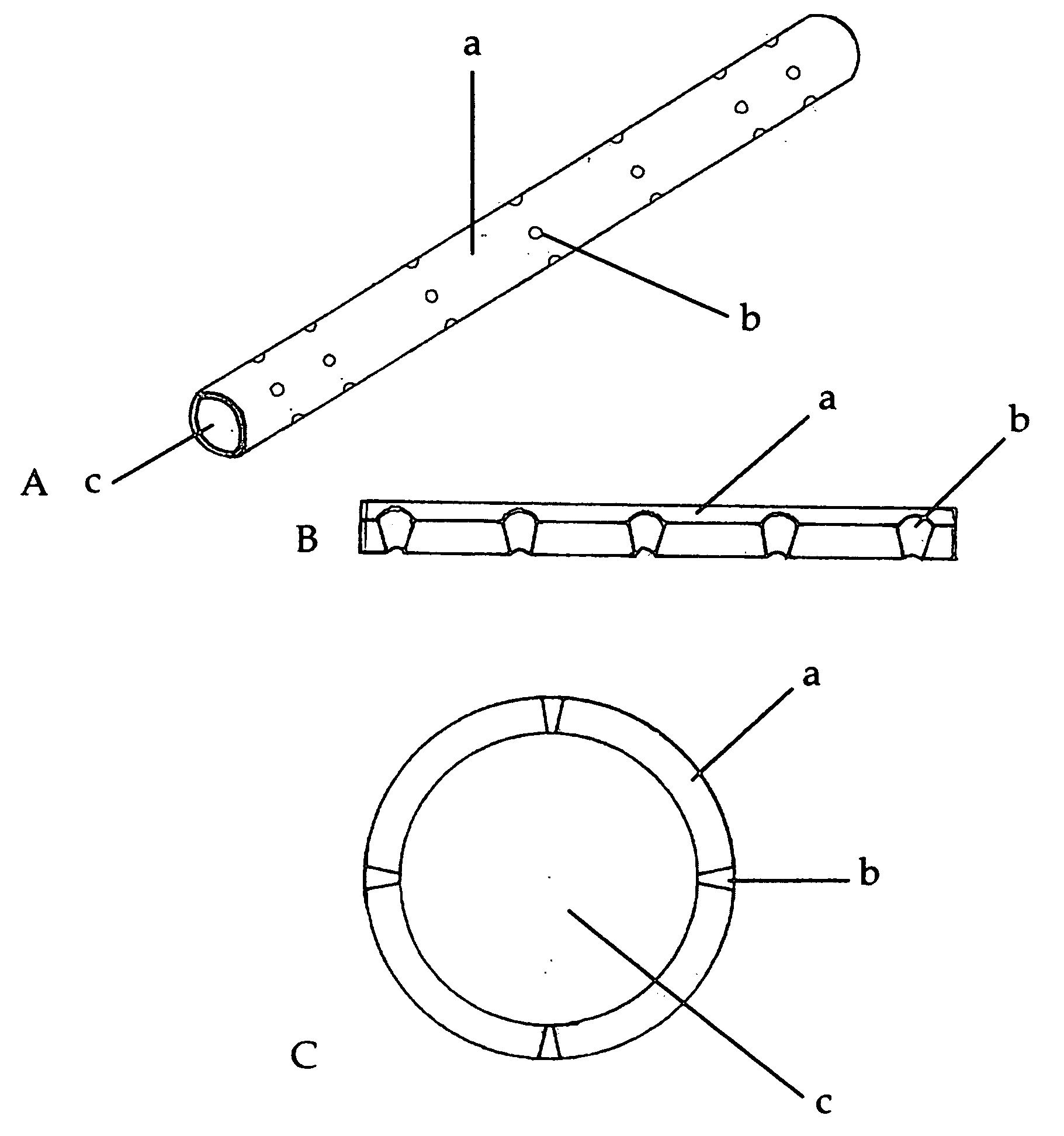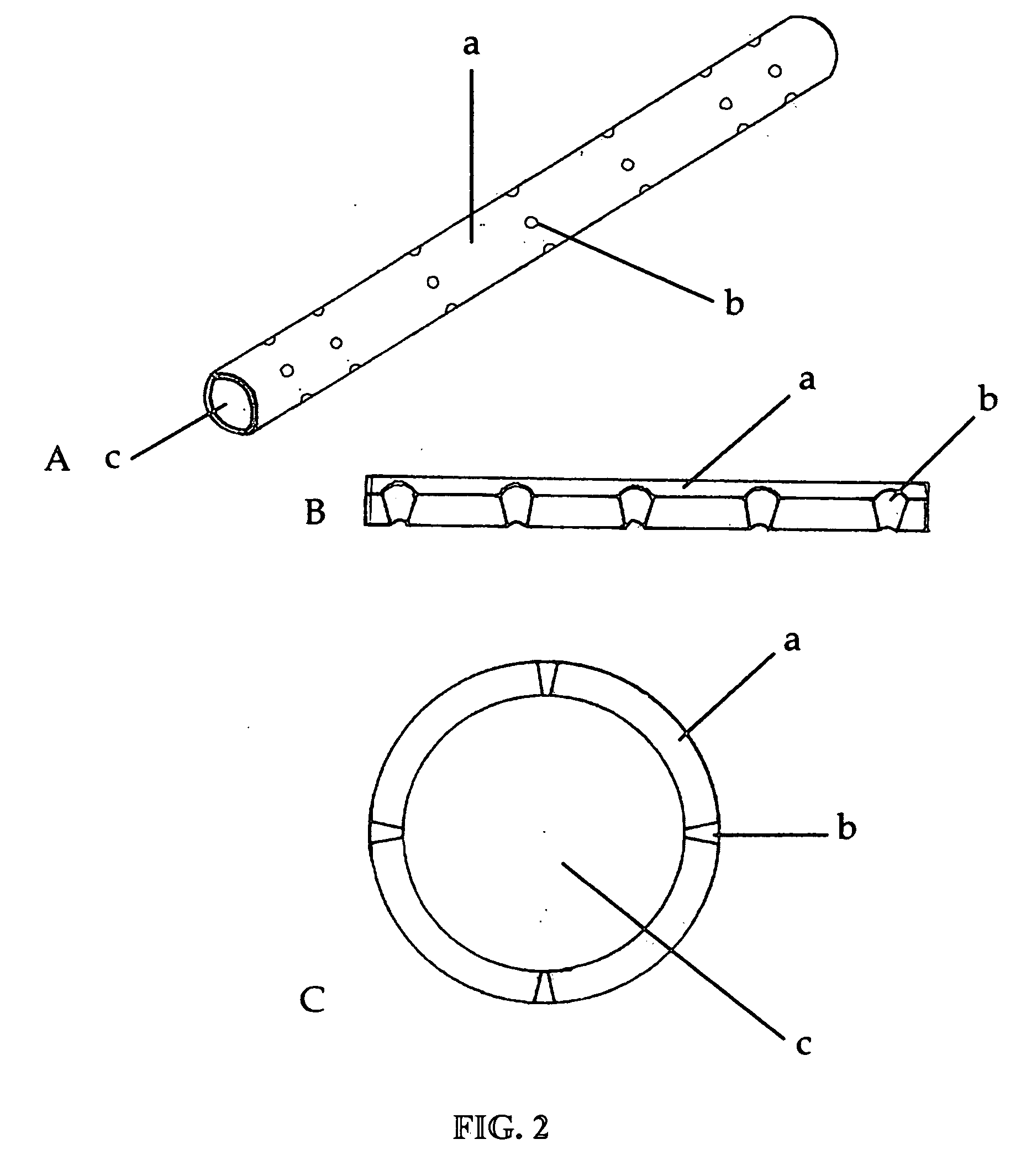[0015] The present disclosure may be described in certain aspects as novel designs for a biosynthetic nerve implant (BNI), which incorporate state of the art
biomaterial technology and provide enhanced and directed nerve regeneration both in the
peripheral nervous system as well as in the adult injured spinal cord, as compared to other techniques. Advances provided in the disclosure include design of the implant amenable to
nanotechnology incorporation, design of a novel
scaffold-
casting device for medical-grade production, and definition of the cellular and molecular components. The present disclosure includes initial animal evidence demonstrating at the anatomical, behavioral, and electrophysiological levels, that the disclosed BNI better promotes and directs nerve regeneration after
sciatic nerve gap repair and dorsal hemisection gap repair of the adult spinal cord.
[0016] Preferred embodiments of the disclosure include a biosynthetic nerve scaffold that provides an external, perforated conduit incorporating multiple microchannels within the lumen and including a biodegradable
hydrogel matrix. Furthermore, each microchannel may incorporate cells, growth factors and / or
extracellular matrix molecules both in the lumen and / or in the walls of the microchannel (FIG. 1). In preferred embodiments, micro- or nanostructures are incorporated in the lumen and / or luminal surface of the microchannels. In some embodiments, a gel-forming matrix is used with the cells in the lumen. When, in certain preferred embodiments, cultured Schwann cells (SCs) are loaded into these channels, the cells are attached to the surface of the microchannels by virtue of a molecularly defined lumen that permits cells to elongate into a three-dimensional viable tissue structure within hours. The early presence and interaction of
extracellular matrices components, either natural or synthetic, and / or cellular components, either natural or genetically modified, and the novel incorporation of multiple luminal microdomains within the microchannels, designed for molecular, pharmacological, or electrophysiological manipulations or readings, provide an ideal environment for stimulation and study of the early phases of
axon regeneration.
[0017] By forming a permissive substrate for selective
neural growth, the initial nerve regeneration events occur faster, and regeneration is accelerated. Although not wishing to be limited to any theory, providing microspheres within the microchannels is contemplated as allowing for the Schwann cells / hydrogel mixture to anchor to the luminal surface of the microchannels. The formed
Schwann cell cable is then continuous and somewhat uniform along the microchannels, which is an intuitively better biosynthetic conduit for nerve repair, with a higher potential of improving functional
recovery. The present disclosure is not limited to regeneration of nerve
cell connections or to nerve tissue of either the central or peripheral nervous systems. The transparent nature of the hydrogel used for
casting the nerve scaffold allows for real time observation and dynamic follow up of
cellular viability and morphology prior to implantation. Therefore, this disclosure further provides novel methods and compositions for testing the effect(s) of biologically active agents on various
cell types.
[0018] The present disclosure also provides a specially designed, three-dimensional scaffold-casting device that is particularly suited for making the
tissue scaffolds in a reproducible and sterile manner. The device may function to fabricate a multi-luminal implant scaffold matrix to selectively present molecules or seed cells spatially and temporally in three-dimensions with the required physical, structural, biological and chemical factors to promote
cellular development. The disclosed devices are suitable for the production and
reproduction of bio-engineered 3-D cellular scaffolds to exact specifications and requirements for
basic research and clinical applications in tissue bioengineering, allowing for the effective
reproduction and repair of various specialized tissue types and organs by directly addressing the highly complex, three-dimensional, cellular architectural morphology.
 Login to View More
Login to View More  Login to View More
Login to View More 


